- How the North Star is far more interesting than just its position
- Why Cepheid variables are important to astronomy
- How rotation affects the evolution of stars
Q: Tell us about Polaris. Why is it so interesting?
A: Polaris, also known as the North Star, is too far north to be seen with any of ESO’s telescopes from Chile, but those in the northern hemisphere can easily find it in the sky as the brightest star in the constellation of Ursa Minor (the Little Bear). For a long time, it played a crucial role in human navigation since it always allows those in the northern hemisphere to find north. But most people don’t know just how interesting Polaris truly is. It’s actually a multiple system consisting of three stars: Polaris Aa, which is a Cepheid variable and the subject of my research, and Polaris Ab and Polaris B, which are both main sequence stars much like our Sun. Importantly, it is the Cepheid Polaris Aa that we see with the naked eye (Polaris Ab and B are more than 500 times fainter).
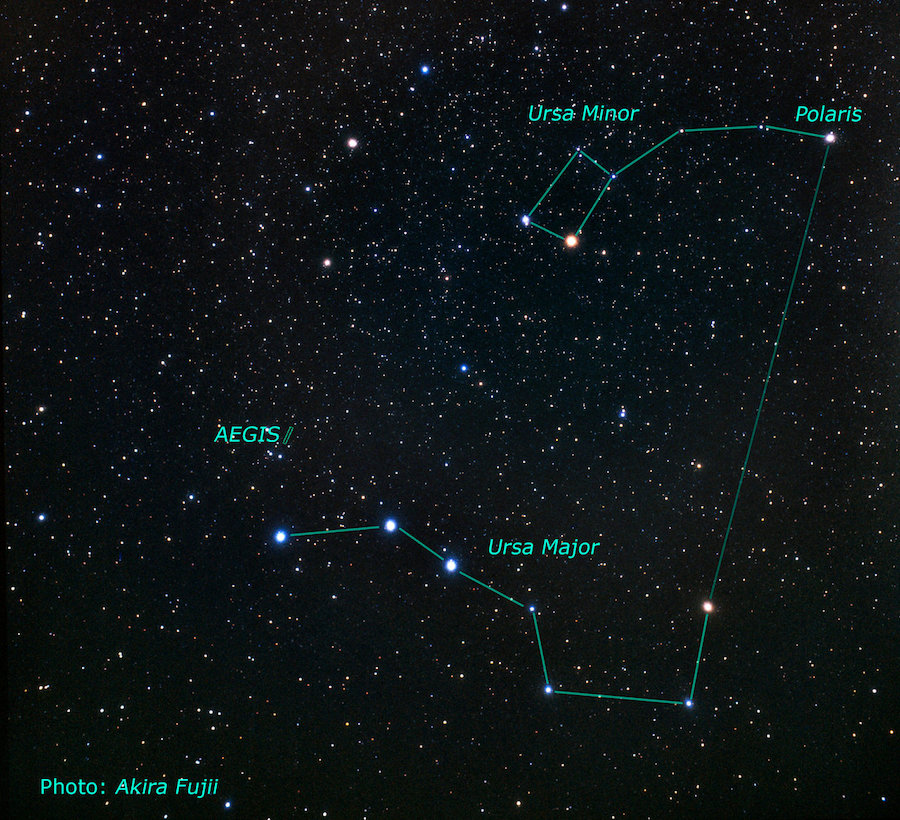
Q: What are Cepheid variable stars?
A: Cepheids are a class of pulsating stars that exhibit periodic changes in brightness, diameter, and temperature. As they grow and shrink, their temperature changes, making the colour of the star vary from yellow to red. The timescale for these variations ranges from a couple of days to a couple of months, and the brightness changes are so significant that they can be detected by eye — as first discovered by the English astronomer John Goodricke in 1784.
Stars change very slowly (we say “evolve”) over millions to billions of years because they slowly use up the source of energy at their cores. The structure of stars thus changes slowly with time. Some stars — those between 3–10 times our Sun’s mass — can become Classical Cepheid variables later on in their lives, when small perturbations grow larger and larger until the entire star starts to oscillate. Polaris is such a variable star, more specifically a Classical Cepheid.
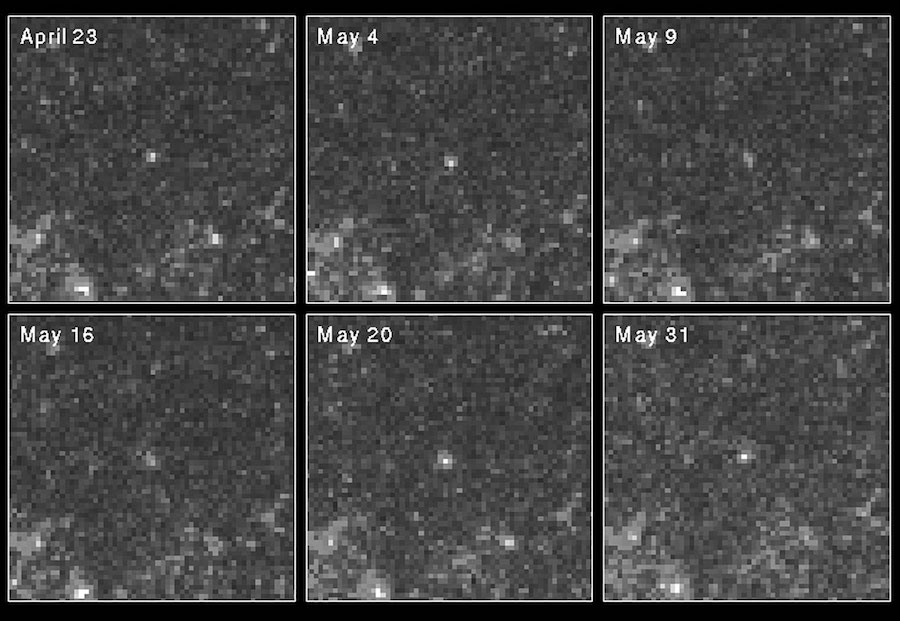
Q: Why are Cepheid variables like Polaris so important in astrophysics?
A: Cepheids are extremely important for two main reasons:
Firstly, they allow us to determine accurate distances to far away galaxies. Cepheids are so-called standard candles: objects whose true brightness we can calculate based on their period (the time it takes for a star to go from bright to dim). We calculate this through a relationship called Leavitt’s Law. Comparing the true brightness with how bright a Cepheid appears in the sky means astronomers can figure out how far away the star and its host galaxy are — similar to a candle that appears dimmer the farther away it is. This is crucial in cosmology, forming the basis of the cosmic distance ladder that we use to measure how fast the Universe is currently expanding. Not surprisingly, Cepheids are the subject of much research in order to achieve the most accurate measurement of the Hubble constant and to learn about the elusive dark energy.
Cepheids are also important because their light variations provide insights into the internal structure of stars in an advanced stage of stellar evolution. Understanding how stars evolve is extremely important to all of astrophysics, helping us understand how galaxies evolve, how the building blocks of life came about (since oxygen, nitrogen, and carbon are created inside stars), and many other subjects. Theoretical models are needed to learn about these things. Such models provide very different predictions for evolved stars depending on the assumptions we put into them — we don’t understand them as well as we understand younger stars. These evolved stars are therefore sensitive laboratories for astronomers to learn about stellar evolution.
For example, an important question in stellar astrophysics is how the rotation of a star around its own axis affects its evolution. Theory predicts that rotation should mix the outer layers of stars in a certain way, and the results of this mixing will show more clearly in the later stages of evolution — such as when stars become Cepheids. This means that rotation can change the surface composition of stars over time. For example, a high ratio of nitrogen to carbon and oxygen is like a smoking gun for stellar rotation.
Incredibly, in Cepheids we can see stellar evolution taking place on human timescales because we can observe slow changes in the duration of their light variations! This allows us to pinpoint the phase of stellar evolution a Cepheid currently is in. Measuring the chemical composition of a Cepheid's surface can therefore tell us a lot about how stars evolve in general, and how rotation affects their evolution.
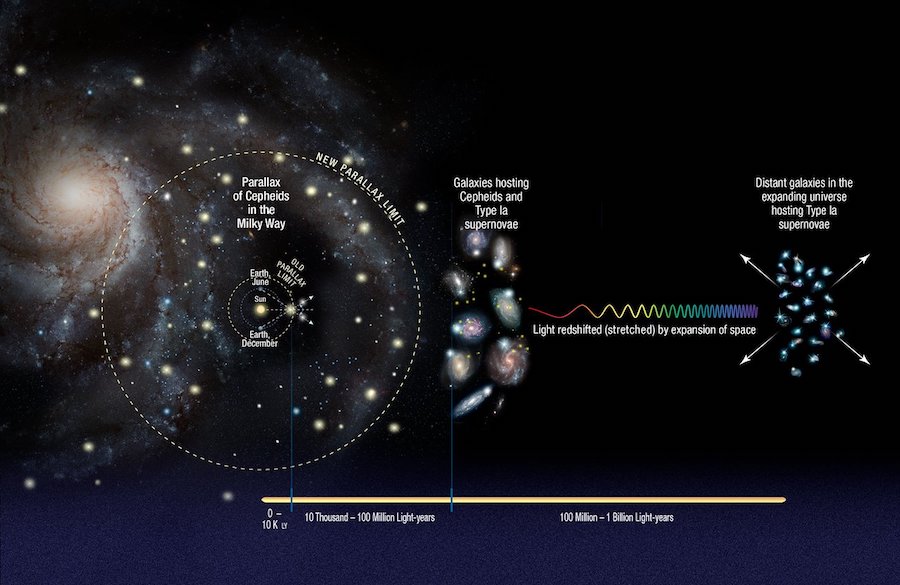
Q: Why is Polaris Aa a particularly interesting Cepheid to study?
A: One reason is the uncertainty about its distance — the distance to Polaris has been revised repeatedly by researchers. A recent measurement by Bond et al. using the NASA/ESA Hubble Space Telescope placed Polaris at the greatest distance yet, at about 520 light-years away. Remember that Polaris is a multiple star system — and yet the new distance measurement by Hubble was actually based only on observations of Polaris B. The Cepheid, Polaris Aa, would simply have been too bright for Hubble to observe.
Polaris Aa is also interesting because of its peculiar behaviour, including changes in the size and duration of its light variations — these have puzzled astronomers for a long time. Additionally, given the controversy of its distance in the past, we hadn’t been able to really figure out its evolutionary stage and other properties. Mind you, this is the closest Cepheid from Earth, so we naturally want to be able to understand it.
What particularly fascinates me is that when this new distance for Polaris B is assumed to be true for Polaris Aa as well, we arrive at an interesting conundrum.
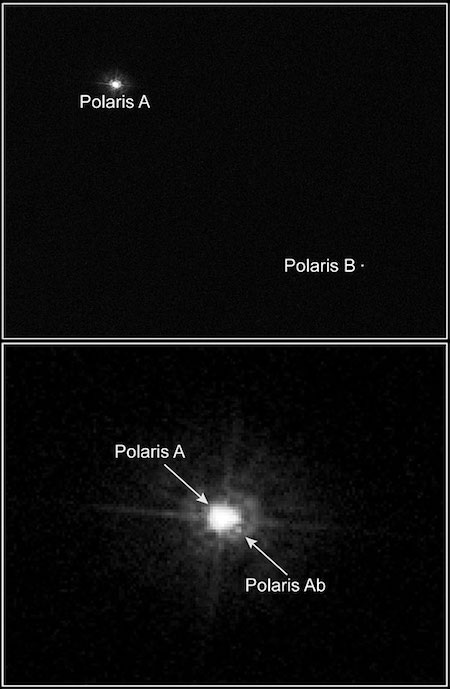
Q: What is this conundrum?
A: In my paper, I show that we can finally understand the properties and evolutionary stage of Polaris Aa in unprecedented detail if we use the distance to Polaris B as its distance. The two are very close in the sky and seem to be moving together, so it’s been commonly assumed that the two stars are genuinely at the same distance, gravitationally bound to each other. Moreover, the extremely detailed agreement between theoretical predictions and several independent, highly sensitive observational results shown in my paper renders this assumption a virtual certainty.
But if the two stars are indeed gravitationally bound, then they should have been born at the same time. This leads to an insurmountable problem: the Cepheid Polaris Aa must be a young star about 50 million years old, whereas B is a relatively old star at two billion years old. This raises very big questions about how these two very differently-aged stars came to be such intertwined companions.
My paper gives some suggestions for the causes of this age discrepancy, but I haven’t yet found a resolution. For this reason, I have jokingly referred to this case as the "Polaris Uncertainty Principle": the better you reproduce the properties of the North Star from theory, the less you understand why you managed to do it!
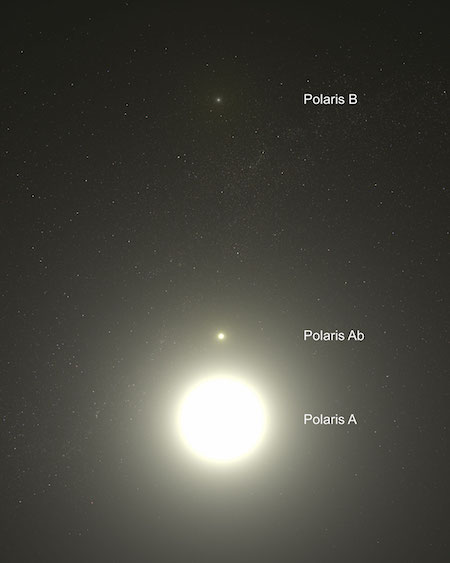
Q: So how did you arrive at these results?
A: This age problem has been noted before, but I’ve now confirmed it by comparing observations of Polaris with the Geneva stellar evolution models, which make predictions about stellar evolution that incorporate the effects of a star’s rotation. All stars rotate and yet many researchers still use models that leave out this crucial effect because modelling rotation is difficult and involves a lot of unknowns. I’ve been very interested in using Cepheid variables to test these theoretical models and see where they fail.
I compared theoretical predictions from Geneva stellar evolution models to observations previously made of Polaris Aa. The results show incredibly detailed agreement between the two, including the rate of period change, Leavitt’s law, Polaris Aa’s colour and brightness, its radius, the abundance of nitrogen in its surface compared to carbon and oxygen, and its mass. Such detailed agreement is very rare for any evolved star, and it strongly supports the assumption that Polaris Aa and B really are at the same distance.
When I suddenly realised that the Geneva models provided a very consistent picture of the evolutionary status of Polaris, bypassing some of the difficulties encountered by other authors, I was extremely surprised and excited. The best part was that the model predictions that specifically depend on rotation almost exactly matched the observed values! This was a huge success for the models.
Q: What else was exciting about this research?
A: On one hand it was the speed with which things happened. I began this work on 22 December last year in response to the paper by Bond et al. mentioned above, and by that same evening, I knew that it was worth writing a follow-up paper of my own. After discussing the result with colleagues at ESO when we returned from Christmas break, I was ready to submit before the end of the first week of January.
On the other hand, there is this interesting juxtaposition: we had arrived at an incredibly detailed understanding of such an important star, and yet how Polaris B and Aa came to be companions is still a puzzle. This pair cannot be explained using standard stellar evolution theory, and not even by a merger in a binary system!
Another nice element is that I have been looking at this star since I was a child, observing it with the naked eye from my bedroom window. And now all of a sudden, I know so much about this object. To me, that is the true wonder of astronomy: making sense of the things that are so far out of our reach and yet we nonetheless relate to them at a very basic level.
Q: What’s next? How might we understand how Polaris B and Aa came together?
A: A promising route is to simulate how star clusters and multiple star systems evolve together, taking into account the dynamics of their gravitational interactions. If the Polaris system is the remaining core of a star cluster that has since dispersed because of dynamical interactions, then it might be possible to explain the age discrepancy between Polaris Aa and B via such interactions and stars that may have merged. I’ve recently initiated a new collaboration with researchers from Bonn to better understand this dynamical picture.
Q: How does this result fit into the big picture of your research area?
A: My research aims to address two fundamental questions of astrophysics: Understanding how rotation affects the evolution of stars and enabling a highly accurate measurement of the expansion rate of the Universe (the Hubble constant).
With this result, I’ve shown the exceptional agreement between stellar evolution models that include the effects of rotation and Polaris, a star that has long thwarted a detailed explanation. One of the key pieces of evidence for rotation — the abundances of nitrogen, carbon and oxygen in the stellar surface — was spot-on. This is a big success for these stellar evolution models, and I plan to keep testing these models with observational data.
I’m also currently working on larger numbers of Cepheids that are used to calibrate the cosmic distance scale. Specifically, I work on the effects that companion stars and star clusters have on the calibration of the Leavitt’s law. Understanding these effects — and correcting for them — will be an important step for measuring the Hubble constant with the accuracy required to better understand dark energy.
Numbers in this article
| 3–10 | Stars with between 3–10 times our Sun’s mass can become Classical Cepheid variables later on in their lives. |
| 500 | Polaris Ab and B are more than 500 times fainter than the Cepheid Polaris Aa. |
| 1784 | The year in which English astronomer John Goodricke first observed a Cepheid with the naked eye. |
Links
Biography Richard I. Anderson
Richard is a German-American astrophysicist born and raised in Aalen, a small town with pretty clear skies in Baden-Württemberg. Richard studied physics in Germany and Sweden and graduated with a “Diplom” degree from the University of Göttingen. He started his research on Cepheids during his PhD at the University of Geneva, Switzerland, and began to focus more on distance scale issues during a postdoctoral fellowship at the Johns Hopkins University in Baltimore, MD, USA. Richard moved back to Germany for an ESO Fellowship in September 2017.


